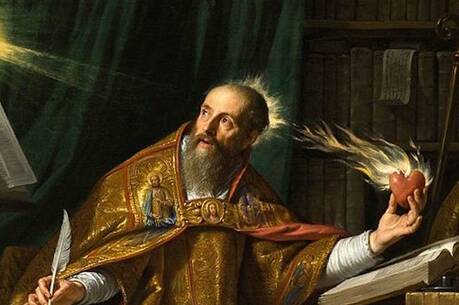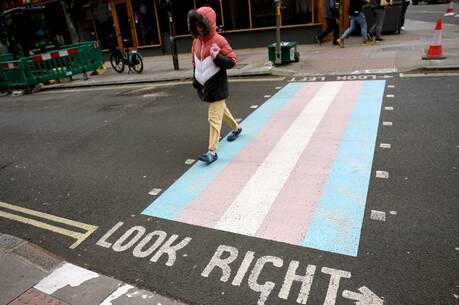Review: These six Ugandan leaders have enacted the ideals of Catholic social teaching
In For God and My Country: Catholic Leadership in Modern Uganda, J. J. Carney gives us a glimpse of what Catholic social teaching looks like, not just in ideas but when it is incarnated. Carney, a theology professor at Creighton University in Omaha, Neb., presents six case studies of Ugandan leaders who have enacted the ideals of Catholic social teaching, and in doing so sheds light on a question the church has wrestled with for centuries: How, after the sputtering end of the confessional state, ought our church be involved in politics? Where should the modern church end and the modern state begin?
A hundred and one combative years lie between the Roman Catholic Church’s two most diametrically opposed answers to such questions. It was in 1864, amid the decade that saw the final loss of the Papal States, that Pope Pius IX issued his “Syllabus of Errors.” There he famously condemned the error of thinking that “the Church ought to be separated from the State, and the State from the Church.” In the “Syllabus” we see the 19th-century European church painting itself as a castle under threat from the besieging forces of modernity. In response, it raised its drawbridge, barred its gates and ratcheted up discipline within its walls.
That a formal transformation of the church’s understanding of its place in the modern world took a century to stabilize ought not surprise.
A century and a year later, at the end of Second Vatican Council’s fourth session, Pope Paul VI promulgated the “Declaration on Religious Freedom,” in which the church insisted not on its own rights, but on the civil right of religious freedom for all. Not only did the document make no mention of a return to an alliance of crown and cross (like the Spanish nacionalcatolicismo), but the council fathers emphasized that “a wrong is done when government imposes upon its people, by force or fear or other means, the profession or repudiation of any religion.” Here was a global, 20th-century church emerging from behind its walls to advocate for the common good in the public sphere.
That this formal transformation of the church’s understanding of its place in the modern world took a century to stabilize ought not surprise. Change often takes place in fits and starts, with many hesitations and half-reversals. Indeed, for many of those 100 years the church struggled to resolve a particular problem: how it could be publicly active without laying claim to the levers of state power.
Though there may seem to be an easy solution to those of us who look back from the 21st century, the fact of the matter is that the church had to find its own pilgrim way into understanding that separating church from state did not have to mean accepting public irrelevance. It took a long time for us to grasp that it was possible to both evangelically proclaim universal moral truths and renounce control of the state as the means for their realization.
On the theoretical level, markers in this evolution in self-understanding can be found in what may seem a surprising source: the documents of Catholic social teaching. What are “Rerum Novarum,” “Quadragesimo Anno” and “Mater et Magistra,” after all, but lessons in how the Catholic religion can be public without fusing church and state? But, like all that is best with the church, we can find evidence of this transformation not only in documents but also in people. And this is precisely the gift offered to us by Carney’s fine new book on modern Ugandan Catholicism.
The church has had to find its own pilgrim way into understanding that separating church from state did not have to mean accepting public irrelevance.
In one case study we are introduced to Benedicto Kiwanuka, who was not only Uganda’s first prime minister but remains to this day the only one to facilitate a peaceful transition of political power in that nation. In another, Carney tells us the story of the Mother Teresa of Uganda, Rose Mystica Muyinza, a woman religious who lived a life of solidarity and charity on the streets of Kampala through her ministry to refugees, sex workers, people with AIDS and special needs children. And we learn about Rosalba Ato Oywa, a Catholic laywoman who has dedicated her life both to analyzing the root causes of violence in the country and to giving voice to those most affected by it.
Perhaps the most striking story, however, is that of Radio Pacis, a Catholic radio station dedicated not only to devotional programming but, as Carney puts it, to embodying “the social dimension of ‘gospel values’ [by] addressing questions of human rights, health, education, sports, family, gender relations, and civic education.” Launched in 2004, Radio Pacis now has a regular listenership of nearly 10 million people—many of whom are Muslim or Anglican.
Much of its success in establishing and stabilizing a Ugandan public sphere can be attributed to the station’s attention to the common good in what is often a corrupt and politicized media landscape. Radio Pacis ministers not just to Catholics, but to all Ugandans, and in so doing has become a “sacred space that facilitates an elevated conversation on questions of human dignity.” Indeed, with so many Catholic media outlets in the United States caught in an increasingly politicized spiral, Radio Pacis is a sharp counter-witness, suggesting that if we follow the directions it offers, Catholic social teaching can help us forge a new path.
Becoming more religious, and investing more deeply in our faith, can lead to deeper support for civil society—not withdrawal from it or coercive control over it.
This is not to say that the implementation of Catholic social teaching in Uganda has been a complete success. After all, despite such powerful witnesses as those featured in the book, Uganda’s once-burgeoning democracy has devolved into what is at best described as a semi-authoritarian regime that has been ruled by the increasingly autocratic Yoweri Museveni since 1986. What such a devolution says about the power and possibility of Catholic leadership, Carney’s book does not say. Nor does Carney make a suggestion as to whether the church ought to take up a more prophetic stance in such a circumstance.
These concerns notwithstanding, Carney’s entire book can make something visible to the reader that can be otherwise hard to see: that becoming more religious, and investing more deeply in our faith, can lead to deeper support for civil society—not withdrawal from it or coercive control over it. This possibility is difficult to keep in mind in part because after Sept. 11, 2001, and Jan. 6, 2021, we are inclined to associate public religion with anti-democratic activism. But this association need not be so tight. Being deeply Catholic can lead to being more dedicated to the good of all. Indeed, such dedication is precisely what Catholic social teaching calls us to think, to do and to be. This is a political Catholicism that is not “for us” but, as the Orthodox theologian Alexander Schmemann so elegantly referenced the Gospel of John, “for the life of the world.”
Catholic social teaching, whether expressed in texts or enfleshed in persons, is itself a politics. It is, in fact, the political strategy the church in the modern world spent a century developing. And it provides a glimpse of how such a strategy of being both Catholic and catholic—both uniquely ourselves and totally for the world—looks when incarnated in the lives of our Ugandan sisters and brothers, whom Carney describes for us in For God and My Country.
This article also appeared in print, under the headline “What Catholic Social Teaching Looks Like,” in the February 2022, issue.






